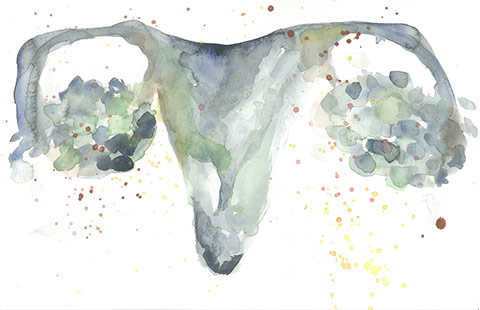The egg you release this menstrual cycle has actually been in its final phase of maturation for the past 3 menstrual cycles. That is when the pre-antral follicle stage began; during this time the follicle grows from 0.2 mm to about 20 mm when the follicle is finally mature and the egg is ready for fertilization. Many follicles grow at the same time during the pre-antral stage. The follicles become “antral” once there is a fluid-filled sac which surrounds the egg.
During an initial fertility work-up, your reproductive endocrinologist may do an antral follicle count (AFC) using an ultrasound, which can provide an estimate of how many follicles may be stimulated to produce mature eggs during an in-vitro fertilization cycle. At this stage of development, the follicles have already been transitioning from pre-antral to antral for about 2 months. In a natural menstrual cycle, most of these antral follicles will naturally stop developing (a process called atresia) and one will go on to become the dominant follicle which will release an egg at the time of ovulation. However, in the presence of the high levels of hormones used during an IVF cycle, many of these antral follicles will not succumb to atresia and will instead develop into maturity.
Supporting this final stage of folliculogenesis, or the development from pre-antral to mature follicle, requires an optimization of the environment surrounding your ovaries for at least 3 menstrual cycles before conception. This includes:
- Increasing the circulation of blood to your organs of reproduction
- Reducing your body’s stress response
- Ensuring your body is getting the nourishment it needs through diet and supplements
- Appropriate exercise and giving yourself adequate time for sleep and rest
Talk to your fertility specialist acupuncturist to find how best to implement the above points to help your body prepare for conception.
(Diagram of folliculogenesis from pre-antral to dominant follicle stage, courtesy NCBI)
https://www.ncbi.nlm.nih.gov/books/NBK29/box/A1226/
